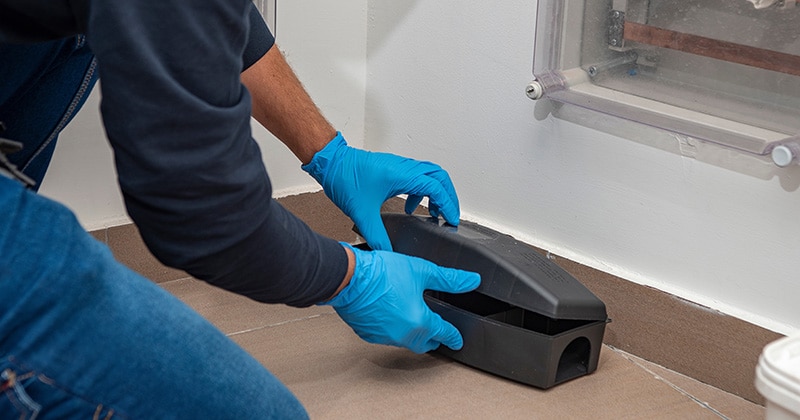What You Need to Know About Integrated Pest Management
IPM is “a sustainable approach to managing pests by combining biological, cultural, physical, and chemical tools in a way that minimizes economic, health, and environmental risks.”

Staff Contributor
Integrated pest management (IPM) is a common topic in farming, pest control, and environmental sustainability discussions. What is it, how does it work, and how is it different from other pest management practices? And as a pest control business, should you offer your customers IPM solutions?
Read on to explore the principles, practices, and motivation for integrated pest management.
What Is Integrated Pest Management?

US law (7 USC 136r-1) defines integrated pest management (IPM). IPM is “a sustainable approach to managing pests by combining biological, cultural, physical, and chemical tools in a way that minimizes economic, health, and environmental risks.”
In other words, IPM refers to safe, eco-friendly methods for dealing with pests.
IPM methods are in sharp contrast to conventional pest management practices. They avoid spraying pesticides. Instead, IPM strategies focus on natural or less harmful pest control solutions. This includes habitat manipulation, biological control agents, and modifying lifestyle/cultural practices.
The idea of integrated pest management may seem novel, but it’s been around for decades. IPM was first mentioned in a 1972 directive from President Nixon. It urged the use of IPM solutions in agriculture, forestry, education, and health.
But it’s only now that IPM is getting more press. Thanks to increasing public pressure to conserve the environment and farm sustainably.
Pests as Part of a Natural System
When most people think of pests, they picture spiders, insects, and rodents. And we usually associate pests with diseases and destruction. It’s true. Pests are a nuisance, a threat to farms and buildings, and a risk to human, animal, and plant health.
But “pest” is a very subjective term. A pest is only a pest from our perspective. From the organism’s point of view, it’s only trying to survive by making the most of what’s available.
This is not to say that pests are not “bad.” Predators cause an estimated $232 million loss to livestock farmers annually. Birds alone damage over $150 million worth of crops each year.
But every organism, including those we’ve labeled pests, has a role in the ecosystem. For instance, most insects, such as bees, moths, ants, flies, and wasps, are pollinators. Pollinators are vital to plant life, not to mention that they affect 35% of global crop production.
Moreover, every organism forms an intricate food web that entire ecological communities depend on. Attacking or eliminating a single species upsets this delicate balance. The result can be a cascade of adverse ecological effects.
This is a central issue IPM solves: controlling pests without harming the natural order.
What Are the Principles and Practices of IPM?

Integrated pest management is not a single action or practice. It’s a multifaceted pest control approach involving science-backed, environmentally conscious strategies and decisions.
Let’s look at the fundamental principles and practices of IPM:
Prevention
Prevention is always better than cure. Pest avoidance and suppression are the first two principles of IPM. These strategies aim to curb a pest problem before it happens or minimize pest damage.
Pest prevention and suppression methods vary widely depending on the pest, its habitat and behavior, and its effect on human activity (dwelling, construction, farming, etc.).
Common pest prevention tactics include:
- Planting pest-resistant crop varieties
- Growing trap crops alongside the main crop in fields
- Physical barriers to prevent pest intrusion on farmland, silos, animal enclosures, or buildings
- Adopting farming practices that discourage pest infestations. For example, crop rotation, proper irrigation management, and intercropping
- Maintaining hygiene, storing food properly, and setting an optimal indoor atmosphere. These habits discourage pests from settling in dwelling spaces
Biological and Environmental Monitoring
Part of IPM involves identifying and monitoring various pest populations. Extensive monitoring keeps tabs on particular pests within a localized area. This enables data collection on the pest’s numbers, growth rate, and movements.
The goal is to develop an early-warning system. Farmers are alerted to an imminent infestation when pests exceed a population threshold. Organizations can then plan the best course of action, staying one step ahead.
Deploying Biological Pest Control Solutions
Biological pest control is using other living organisms to control pest populations. Most pests have natural enemies that keep their numbers in check.
For instance, most predatory birds eat common bugs. Introducing a pest’s natural predator, parasitoid, or pathogen has effectively managed infestations.
Entomologists have released sterile males into the wild to check insect pest populations. This biological pest control approach is known as the sterile insect technique (SIT).
Biological pest control includes the use of biopesticides. These are non-chemical pesticides derived from naturally occurring compounds.
Deploying Select Chemical Agents
Sometimes the only way to manage a pest infestation is through chemical warfare. But with IPM, we’re not talking about the typical off-the-shelf pesticides.
IPM programs avoid regular pesticides due to their indiscriminate adverse effects. Plus, some pests develop resistance to chemical pesticides.
Instead, IPM advocates for chemical agents that target a particular organism. These are not necessarily killing agents. Some are repellants, growth regulators, or induce resistance-activating compounds.
Typical pesticides are only used when necessary.
Evaluating Results
Another critical IPM practice is evaluation. After a pest control action, the results are analyzed. The analysis gauges success and provides an opportunity to learn from the incident.
Generally, evaluation assesses effectiveness based on the resulting pest population figures and damages.
The National Road Map for Integrated Pest Management

As mentioned, the US government first expressed interest in IPM in 1972. Various government agencies and departments have contributed to IPM initiatives over the years. They’ve advanced research, advocacy, education, and legislation.
In 2001, the Federal Integrated Pest Management Coordinating Committee (FIPMCC) was formed. FIPMCC is a leadership, coordination, and management body for federally funded IPM efforts.
The US Department of Agriculture tasks FIPMCC with setting goals for IPM programs. The committee developed the National Road Map for Integrated Pest Management.
The roadmap’s goal is the development and adoption of national IPM initiatives. It does this through the following:
· Developing New IPM methods and tactics
· Introducing IPM education programs in public and private learning institutions
· Spreading awareness about the importance and benefits of IPM
· Implementing and overseeing IPM plans and programs
The road map was first drafted in 2003. It has undergone updates to reflect advances in IPM practices and scientific findings. The most recent version was updated in 2018.
Should You Offer IPM to Your Pest Control Customers?
Integrated pest management is here to stay. It has strong backing from the government and the private sector. And IPM has demonstrated that managing pests is vital to ecological conservation. Not to mention sustainable food production and healthy living.
That’s a strong selling point in today’s sustainability-conscious world. And as a commercial industry, IPM is worth nearly $20 billion.
But is it a solution your pest control business could offer its customers?
Here are actionable questions you can use to evaluate the business case for adding Integrated pest management services:
- Have my profits been consistently high for two years? Adding new equipment and services can be a money drain. Do you have the extra capital to invest right now?
- Is my client base open to eco-friendly services? Unfortunately, we live in a polarized time. Not all people view green initiatives positively.
- Will IMP services expand my opportunities with existing customers? Are new and existing customers asking if you have eco-friendly services?
- Are you losing business by not offering IMP services? Do competitor research to determine if your competition is offering these solutions. If they’re not, you may be first to the market and have a competitive edge.
- Do I have adequate staffing to support new services? Can my technicians quickly learn new techniques and sell them to customers?
In short, IPM services are worthwhile if they align with the realities of your business operations and the needs of your customers.
Kevin is an experienced content expert with experience in marketing strategy, creative writing, video production, social media, and team training. Additionally, he also has a master's degree focused in Playwriting from Texas State University.

Business Solutions For Field Service Pros
EverPro offers specialized solutions designed for home and field service professionals. We’ve got the business tools to help you get the job done.



